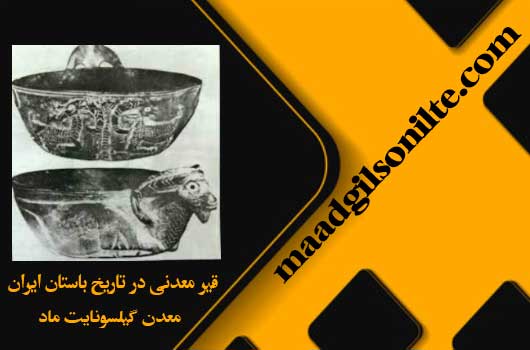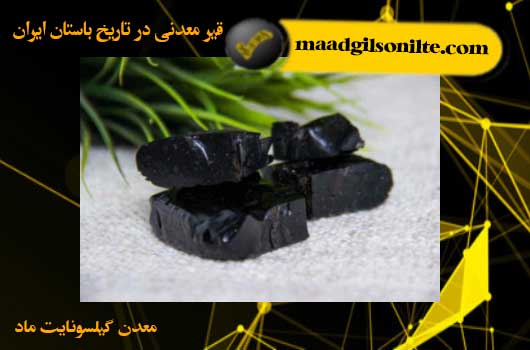
Mineral bitumen in the history of ancient Iran: It is one of the materials that Iranians are familiar with in ancient times and they played an important role in recognizing the economic, social and cultural history in the ancient period. According to ancient Iranian sacred texts, the word oil is derived from the word Penta in Avesta.
The results of archaeological excavations and historians’ reports show that the inhabitants of the Iranian plateau have been familiar with natural oil and bitumen since about seven thousand years BC. In this ancient period, bitumen was an important resource for the Iranian society in an economic way.
The first civilization to get acquainted with mineral bitumen was the ancient Sumerian civilization. People use bitumen to seal their towers in 4000 BC. Then, the Egyptians and Babylonians also exploited bitumen and used it to build their structures.
During the ancient period, the use of mineral bitumen and the extent of its influence on Iranian material, cultural, political, religious and economic works in the important period are important. The ancient period from the Elamian rule to the Sassanid period included an important part of the developments of the ancient era.
Investigating the use of mineral bitumen in the history of ancient Iran can provide important points about its use in Iran. The largest bituminous works found in Iran belong to the Elam and later Achaemenid civilizations. In the civilization of Elam, bitumen was used as one of the economic bases and was used in construction, sealing and production of wooden objects.
In the Achaemenid period, bitumen became one of the main sources of income and to create new methods of construction and production of artifacts, its exploitation at different levels such harvests in the last Achaemenid dynasty, that is, in the period of Artaxerxes, bitumen as an important economic resource. It was numbered for the government and used in applications such as construction, making vehicles, building ships and producing agricultural products.
Achaemenid period:
In the Achaemenid period, bitumen extraction became widespread, and along with it, the processing and production of various products from bitumen is also done in a special way. For example, bitumen was used in construction as a material that is resistant to water and building, and it was used to seal buildings, cover floors and walls.
Also, in the ancient period, mineral bitumen is also used as an important material in the military industry. For example, during the Achaemenid period, bitumen was used as one of the materials used to make sword cloth.
Sassanian era:
During the Sassanid period, bitumen extraction was carried out in a special way in areas such as Khuzestan, Lorestan and southern Iran. During this period, bitumen was also used as one of the important materials in metal industries and was used in the production of copper and brass alloys.
Also, in the Sassanid period, bitumen was used as a source of light and heat. In some sources, it has been mentioned that bitumen is used as one of the materials used in the production of oils.
In general, the extraction and use of mineral bitumen in the history of Iran has played an important role in the economy, culture, politics and social societies of this region. In this period, bitumen is used as an important economic resource and one of the materials needed in building construction, production of agricultural industries, metal and military industries.
Mineral bitumen extraction in Iran in ancient times is done in both underground and surface ways. In underground preparation, bitumen mines were obtained using tunnels and foundations that were dug underground. On the surface, bitumen was collected from areas where it naturally came to the surface.

In ancient times, bitumen was used as one of the materials used in various industries. Among the uses of bitumen in this period was the making of religious symbols using natural bitumen.
One of the most famous religious symbols made of natural bitumen is a cylinder 19 cm high and 11 cm in diameter, kept in the Louvre Museum in France. The symbol is cylindrical in shape and decorated with carvings of a gazelle, a cat and an eagle with spread wings. In ancient times, these symbols were used as symbols of holiness in religious rituals.
Inscription made with mineral bitumen:
This inscription is 25 cm high, 22 cm wide and 8 cm thick. It was discovered in 1877 and is kept in the Louvre Museum.This inscription is 25 cm high, 22 cm wide and 8 cm thick. It was discovered in 1877 and is kept in the Louvre Museum. Animal and human motifs are also carved on this inscription.
This inscription is quadrangular and there is a hole in its center. Similar to this type of inscription was common at that time and 120 examples of it were discovered in Syria and Iraq. Most of these books were found in temples and reinforce the idea that extraordinary designs were also sacred and used in religious rituals.
The ancient Iranian road built with natural bitumen is one of the important historical symbols of our country, which shows the skill and ability of these people to build. Iranians used bitumen not only in large buildings and structures, but also in the construction of roads that established connections between different cities.
The Royal Road is one of the important roads in ancient times, which was built from Susa to Sardis by the order of the Achaemenid king, Darius I. This 2700 km long road was the most important means of communication between big cities at that time. The construction of this road was done using natural bitumen and other materials such as stone and brick. To build this road, experienced workers and engineers were used who were able to structure this road with very high quality and resistant to harsh weather conditions.
In addition to the royal road, other roads were also built using natural bitumen in ancient times. One of these roads was the sacred road that connected the temples around Babylon. This road was also covered with bitumen and carpeted with pieces of stone and red bricks. The purpose of building this road was to facilitate the movement of kings and priests to perform religious ceremonies.

In ancient times, natural bitumen was known as a healing medicine. Doctors of that time used bitumen as a treatment for many diseases. Due to its antiseptic properties, this treatment is useful for treating wounds, fractures, muscular and rheumatic pains, gouty pains and many other diseases.
Abulqasem Istakhari, one of the writers of the 3rd century of Hijri, wrote about natural bitumen and its healing properties and the healing of bitumen in a cave in Darabgerd, Fars province. He says that its healing power was such that a guard always watches next to this cave.
Currently, the people of Fars use natural bitumen as a treatment. By mixing natural bitumen and animal oil, they make an ointment that is very effective in treating muscle and rheumatic pains.
Persian people called this medicine “mumiya” and used it to treat wounds and fractures. Also, around Jahorm city in Fars province, there have been natural bitumen mines and bitumen is used as a treatment from there.

